-
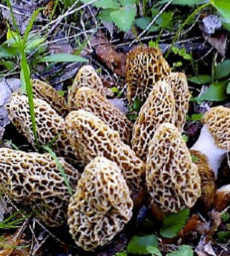
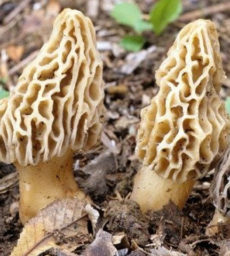
White Morel Spores (Morchella)
$14.95Morchella, the true morels, is a genus of edible mushrooms closely related to anatomically simpler cup fungi in the order Pezizales (division Ascomycota). These distinctive fungi have a honeycomb appearance, due to the network of ridges with pits composing their cap. Morels are sought by thousands of enthusiasts every spring for their supreme taste and the thrill of the hunt, and are highly prized by gourmet cooks, particularly in French cuisine. Due to difficulties in cultivation, commercial harvesting of wild morels has become a multi-million-dollar industry in the temperate Northern Hemisphere, in particular North America, Turkey, China, India, and Pakistan, where these highly prized fungi are found in abundance.
Typified by Morchella esculenta in 1794, the genus has been the source of considerable taxonomical controversy throughout the years, mostly with regards to the number of species involved, with some mycologists recognising as few as three species and others over thirty. Current molecular phylogenetics suggest there might be over seventy species of Morchella worldwide, most of them exhibiting high continental endemism and provincialism.
The genus is currently the focus of extensive phylogenetic, biogeographical, taxonomical and nomenclatural studies, and several new species have been described from Australia, Canada, Cyprus, Israel, North America, Spain and Turkey.
-
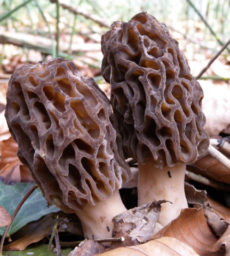
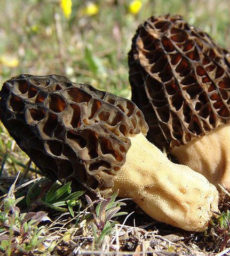
Black Morel Spores (Morchella Importuna)
$14.95 – $29.95Cultivation Difficulty: Difficult
Type: Edible
Substrate: Grass seed, hardwood sawdust
Colonization/Fruiting Temperatures: 70-75F/40-60F
Sclerotia Formation Temperature: 60-65FLandscape morels are considered good candidates for cultivation since they don’t appear to be dependent on seed plants for fruiting. Morchella importuna is fairly common in the northwest of North America with unconfirmed reports in the Midwest and East. It is usually found in gardens, planters and landscaping sites in early spring.
The morel strain provided here was isolated from a wild Oregon, USA specimen and successfully fruited in a disturbed garden habitat in March 2004. This sample was previously provided as “Morchella elata group” but was recently confirmed to be Morchella importuna through genetic analysis.
Currently, there is no reliable method of fruiting morels under laboratory conditions. We offer this species for experimental purposes and make no guarantees beyond the viability of the culture and its ability to form sclerotia. Outdoor cultivation is recommended for the highest chance of success.
See also Morchella rufobrunnea – Yellow Landscape Morel.
The formation of sclerotia is widely accepted as the preliminary stage to the formation of morel mushrooms. A morel sclerotium is a hard mass of compressed mycelium that forms underground during the late spring and summer. It is thought to be a dormant structure in the morel lifecycle that allows it to over-winter. The sclerotium can then quickly spring to life with the warm spring rains.
Current successful cultivation method:
Using a presealable MycoBag(TM) with self-healing injection port, place a cup or so of soaked and well drained grass seed on the bottom near the injection site and a thick layer of moist hardwood sawdust on top. Seal with an impulse sealer and sterilized at 15psi for 2-3 hours. After cooling, inject the culture syringe into the grass seed and let it colonize at 60-65F for at least 3 weeks. Do not mix the grass seed with the sawdust. The morel mycelium will feed on the grass seed and use that energy to grow sclerotia in the nutrient poor sawdust. There should be plenty of the small orange sclerotia visible before planting outside. In November-January, dig a small depression in a shady garden area and sprinkle it heavily with garden lime. Dump out the sawdust layer into the depression and cover it with garden soil mixed with a few handfuls of lime and ignore it. With luck, morels will appear in the spring. Alternative methods recommend mixing wood ash with the sclerotia as black morels are often associated with burn sites. This was not attempted with this strain.
The above method can be attempted with jars but the grass seed should be placed on top of the sawdust instead of the bottom.
We would be interested in any reports of success with this culture.
-
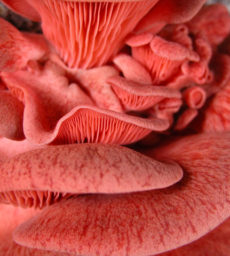
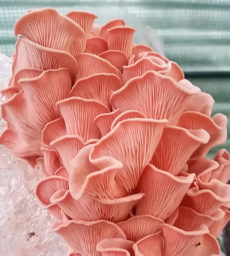
Oyster Spores
$14.95Oyster Spores
Oyster Spores Mushrooms are a fantastic and super easy mushroom to learn on and grow.
Cultivation Difficulty: Easy
Type: Edible
Substrate: Pasteurized straw, wood chips, sawdust, various grains, coffee grounds, agricultural waste, newspaper and cardboard.
Colonization/Fruiting Temperatures: 75-85F/50-75F
Available In: Culture Syringe, Culture Slant
Oyster Spores magic mushrooms are easy to grow. Check your local mushroom growing laws. Growing mushrooms for identification and taxonomy purposes? We have your spores!
In addition to the Oyster Spores spores, here are some other mushroom spores that you may be interested in reviewing: Alacabenzi mushroom magic spores, B+ mushroom spores which is also called B Plus mushroom spores, Malaysia Spores mushroom spores, PES Hawaiian mushroom spores, Ecuador spores
Furthermore check out our new Mushroom Grinder!
Mushroom Capsules found here…
The Phoenix Oyster Spores mushroom is an aggressive mushroom that fruits easily on a wide range of substrates. This is the most popular mushroom for beginners and is the top choice for introductory mushroom cultivation demonstrations.
Fresh oyster mushrooms seen at markets are most often this species. The aggressive and productive nature that makes this mushroom popular also makes it quick to decay after maturity. Harvested mushrooms may continue to grow even if refrigerated and often spontaneously form new primordia. Mushrooms should be consumed or dried within days of harvest for best quality.
These mushrooms need plenty of fresh air to develop normally. High carbon dioxide levels from mushroom metabolism will accumulate in sealed growing environments and can reduce cap size and elongate stems severely.
Oyster mushrooms, the common name for the species Pleurotus ostreatus, are one of the most common types of cultivated mushrooms in the world. They’re also known as pearl oyster mushrooms or tree oyster mushrooms. The funghi grow naturally on and near trees in temperate and subtropic forests around the world, and they’re grown commercially in many countries. Oyster mushrooms are eaten in a variety of cuisines and are especially popular in Chinese, Japanese, and Korean cooking. They can be dried and are typically eaten cooked.
What Are Oyster Spores Mushrooms?
Oyster mushrooms are beloved the world over for their delicate texture and mild, savory flavor. The mushrooms typically have broad, thin, oyster- or fan-shaped caps and are white, gray, or tan, with gills lining the underside. The caps are sometimes frilly-edged and can be found in clusters of small mushrooms or individually as larger mushrooms. Oyster mushrooms are more expensive than white button mushrooms but less so than rarer mushrooms like morels, and take little prep since they can be used whole or chopped. They are even used to make mycelium furniture and many other products.
How to Cook With Oyster Mushrooms
Like all mushrooms, oyster mushrooms act almost like sponges, soaking up any water they come into contact with. Don’t leave them sitting in water, even for the sake of cleaning them. Cultivated oyster mushrooms usually don’t need much cleaning—simply wipe off any bits here or there with a dry paper towel. A damp paper towel can be used on extra dirty mushrooms.
While you can eat oyster mushrooms raw and they can be quite pretty added to salads, they tend to have a slightly metallic flavor when uncooked. Cooking brings out their delicate flavor, turning their spongy texture into something uniquely velvety. We recommend using oyster mushrooms for cooked dishes and using button mushrooms for salads and other raw dishes.
Dried oyster mushrooms don’t need to be soaked to be rehydrated the way other dried mushrooms do—just add them to the dish, and they will soak up liquid right away
What Do Oyster Spores Mushrooms Taste Like?
Oyster mushrooms tend to have a subtle, savory anise flavor. Because their flavor is mild, without the strong earthiness of some mushroom varieties, they work well in a range of different dishes. Oyster mushrooms also take on a tender, pleasing texture when cooked. Cooking methods like frying, roasting, and grilling can retain more texture in the mushrooms while braising and sautéing makes them softer.
Oyster Spores Mushroom Recipes
One of the most popular ways to cook oyster mushrooms is to stir-fry or sauté them. This requires a preheated hot pan, a small amount of liquid, and stirring. Make sure to give them space so their moisture can cook off, that way they will truly sauté rather than steam. Serve as a side dish or use in sauces, stir-fries, pastas, risotto, or even to top toast.
Because they get so silky when cooked, oyster mushrooms respond well to braising, too. Add them to soups and stews or sauces. The mushrooms can also be grilled whole on skewers, roasted, or dredged in a crispy coating and deep-fried.